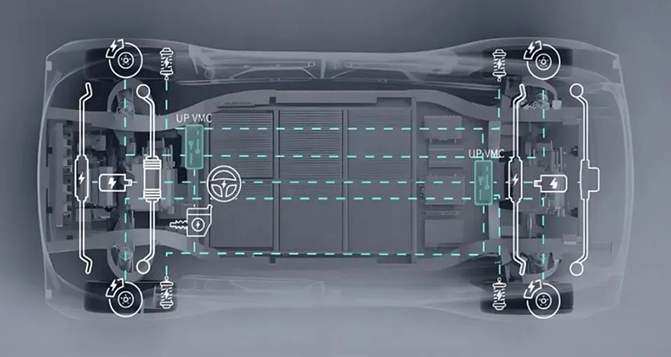1、 The Terminator of Mechanical Connections
Under the steering wheel of Tesla Cybertruck, a set of photoelectric encoders is recording the steering angle with an accuracy of 0.1 degrees. This seemingly tiny sensor represents a fundamental change in automotive control technology over the past century - X-by-Wire technology is completely replacing mechanical connections.
Technical Architecture Analysis
(1) Perception layer innovation
• Steering wheel: high-precision torque sensor (± 0.3Nm error)
• Brake pedal: dual channel displacement sensor (0.1mm resolution)
Case: The steering angle sensor equipped on the Mercedes EQS has a sampling rate of 1kHz
(2) Evolution of decision-making level
Multi source data fusion: integrating data from 12 vehicle sensors
Security mechanism: dual core lockstep operation+watchdog circuit
Example: Bosch iBooster completes emergency braking decision within 300ms
(3) Breakthrough at the execution level
• Steering motor: The peak torque of the brushless motor reaches 150Nm
• Braking system: electronic hydraulic pump pressure response<50ms
Innovation: Toyota bZ4X adopts wire controlled steering to achieve a steering angle of ± 150 degrees

2、 The 'nerve center' of autonomous driving
By 2024, there will be over 1.2 million vehicles equipped with wire control technology on the road worldwide. This technology, originating from space flight control, is becoming the core support for intelligent driving.
Performance leap
• Response speed: Compression of braking delay from 300ms to 80ms
Control accuracy: Torque distribution error<2%
Test data: Waymo autonomous vehicles avoid 23% of potential collisions
Design Revolution
Space release: Removing the steering column increases 180mm of legroom
Weight optimization: The wire controlled braking module reduces weight by 40%
Case: Jike 009 uses wire control technology to achieve a fully flat front floor
3、 Technological breakthroughs in mass production
From the laboratory to the production line, line control technology faces three major challenges:
safety certification
Test standard: ISO 26262 ASIL-D
Verification system: 8 million kilometers of road testing
Breakthrough: BYD e-platform 3.0 passes -40 ℃ extreme cold test
electromagnetic compatibility
Solution: Three layer shielded wire harness design
• Indicator requirement: 200V/m radiation immunity
Innovation: Huawei ADS adopts optical sensors to avoid electromagnetic interference
Experience tuning
• Force feedback: 32 levels of adjustable damping
• Failure protection: seamless switch to backup system in 0.2 seconds
Case: NIO ET7 simulated mechanical pedal foot feel received high praise from users
4、 The Future of Software Defined Cars
With the evolution of EE architecture, wire control technology is entering a new stage:
Domain control integration
• Technology Trend: Chassis Domain Controller
• Performance improvement: Communication latency<2ms
Application: Xiaopeng G9 Central Computing Platform
intelligent evolution
• Predictive maintenance: 500 hours advance fault warning
• Personalized settings: 256 driving style memories
Innovation: OTA upgrade of "track mode" for Zhiji L7
Vehicle road collaboration
Signal interaction: 5G-V2X latency<20ms
• Scenario application: Traffic light speed guidance
Case: Audi urbansphere concept car automatically matches traffic flow
Industry Observation:
The latest wire controlled steering system developed by Continental Group has achieved complete decoupling between the steering wheel and the wheels. When combined with the Nvidia Drive Thor chip, the vehicle can respond to steering commands within 10ms - which is 50 times faster than human neural reflexes. As the President of Bosch Chassis Control Systems said, "Wire control technology is not simply a mechanical replacement, but a redefinition of the basic logic of vehicle control
From mechanical linkages to electronic signals, from manual control to intelligent decision-making, wire control technology is creating a new paradigm of automotive control. On this track, Chinese manufacturers have achieved a leap from following to running parallel: companies such as BYD, Huawei, and NIO have obtained over 2000 related patents, and the wire control startup invested by CATL has a valuation of over 3 billion US dollars in 2024. When cars no longer require mechanical connections to the steering wheel, perhaps we will eventually understand that this "electronic nerve" revolution has just begun.

